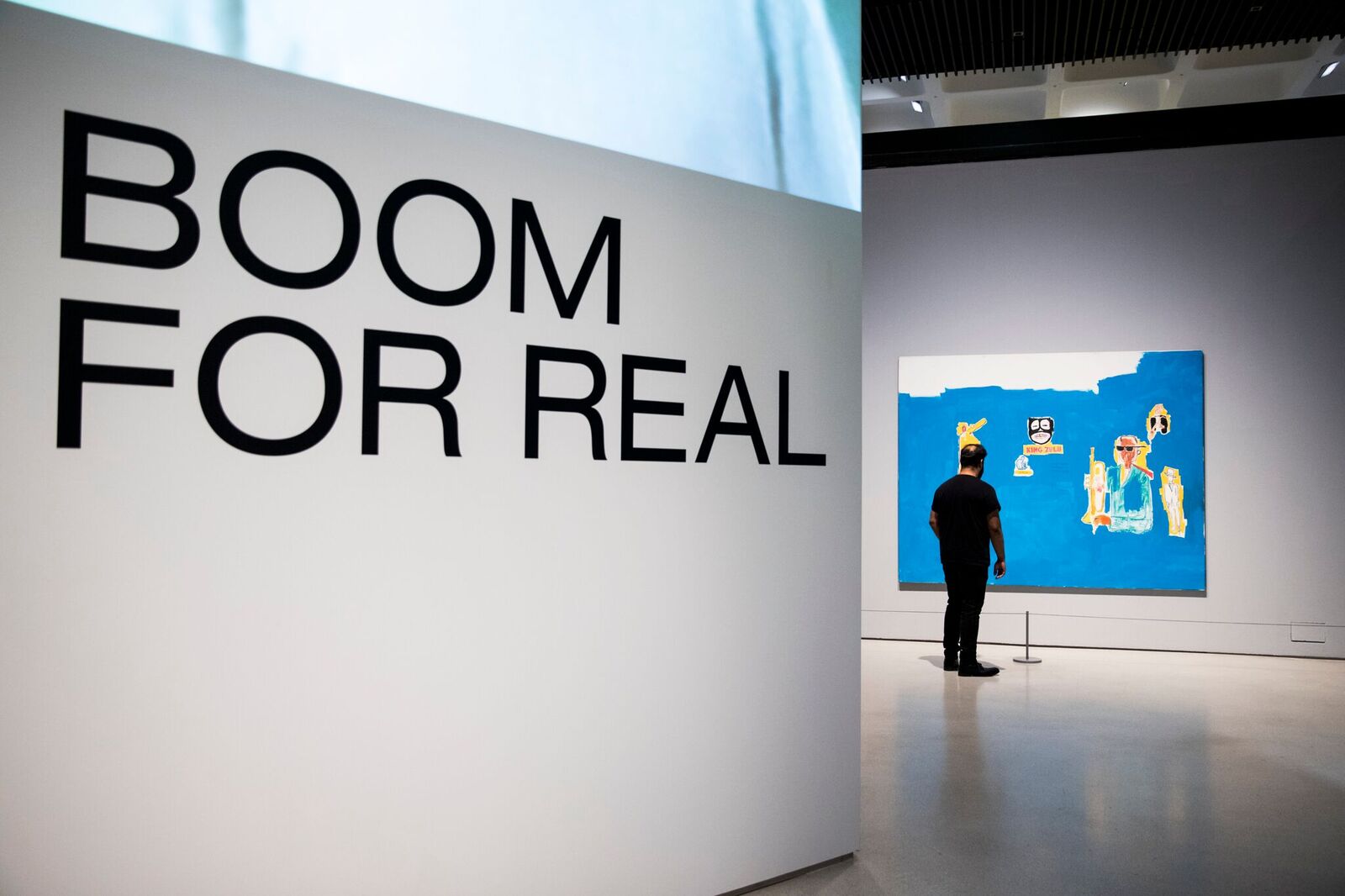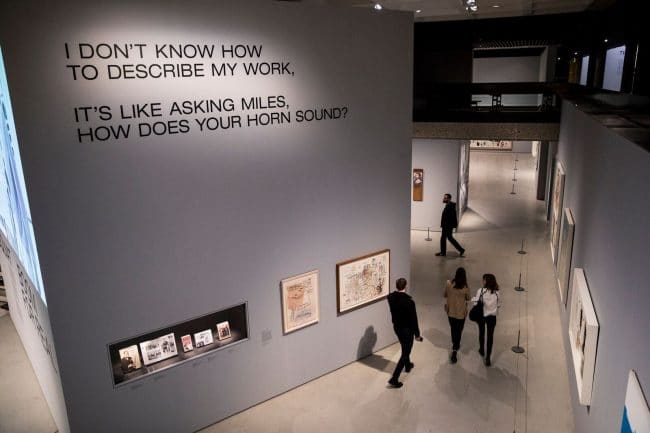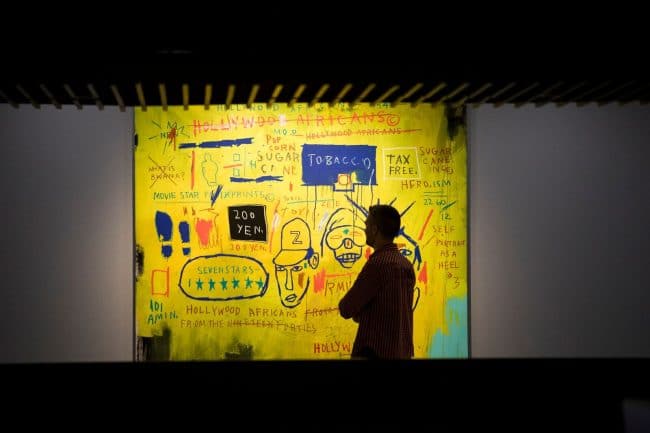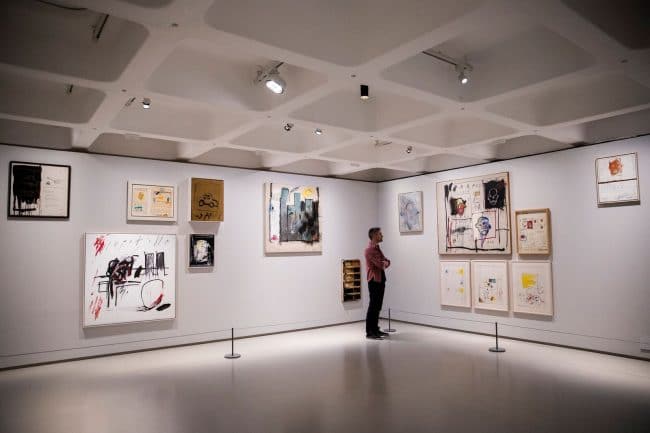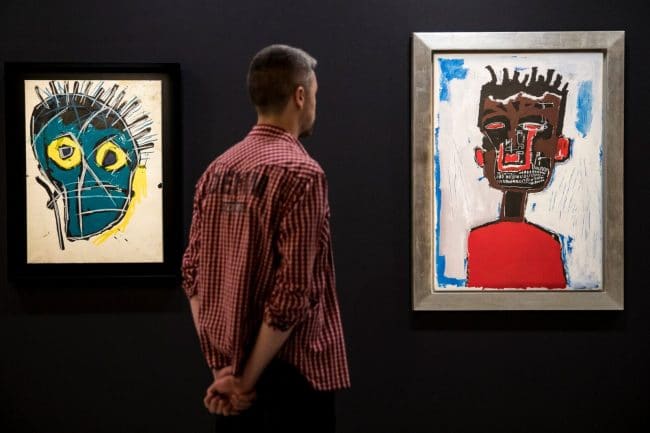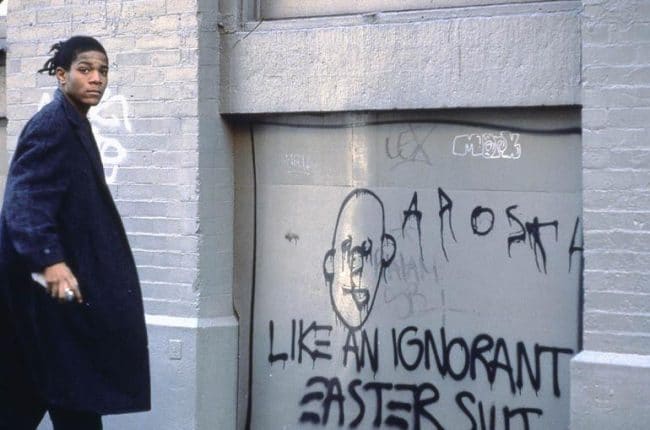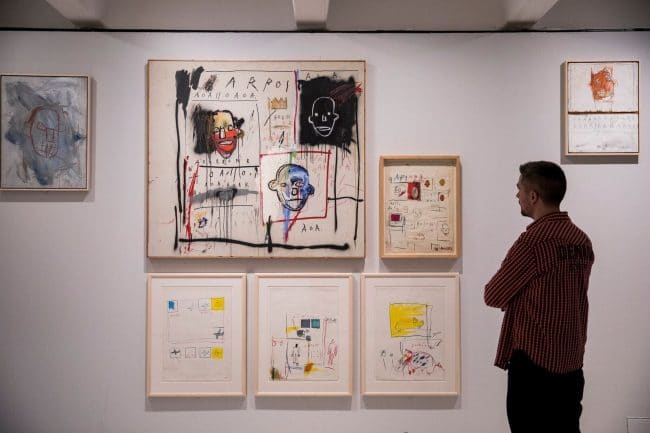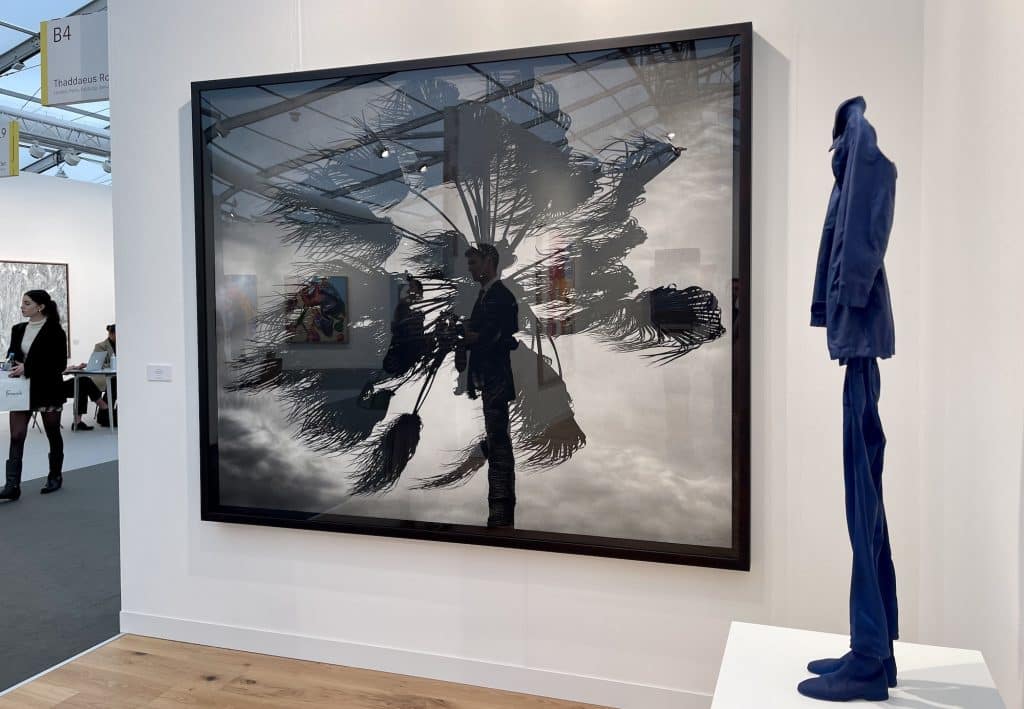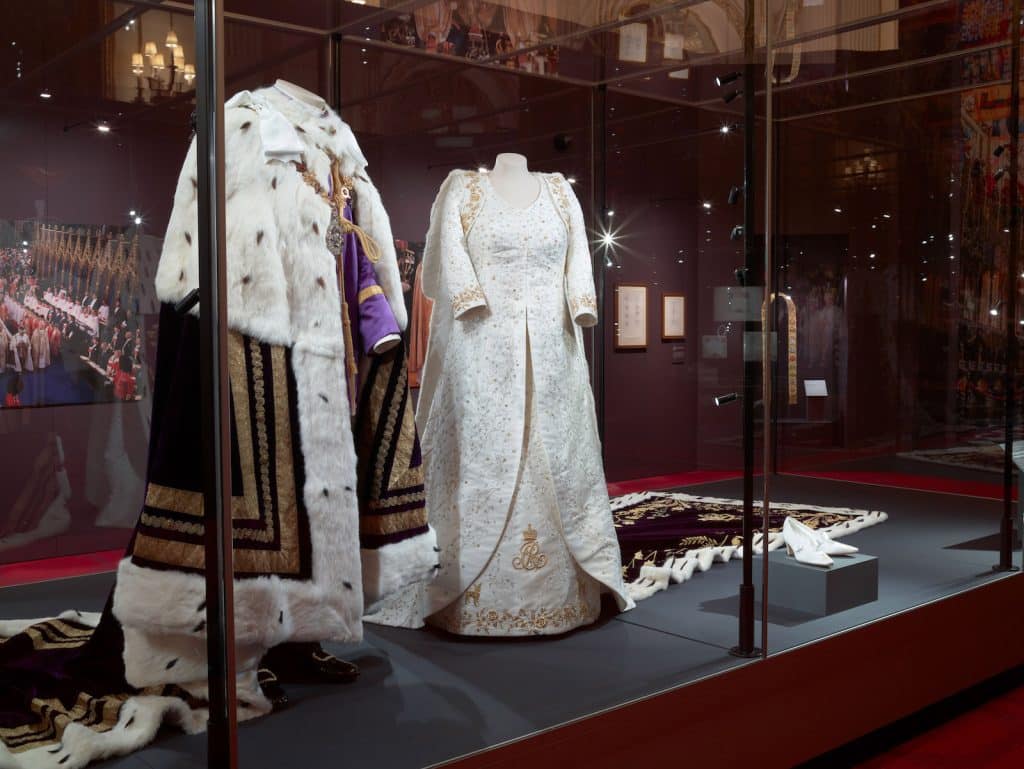Do not come to the latest Barbican Gallery exhibition Basquiat: Boom for Real expecting a straightforward show of Jean-Michel Basquiat’s work. This is rather more than that and all the better for it. This is an exhibition where, in the words of Jane Alison, the Barbican’s Head of Visual Arts, we can “see those works in the context of the New York scene of the 1980s.” We therefore get videos, photographs, music, film, books and paintings, where Basquiat is presented as a multidimensional artist weaving between media.
New York at that time was certainly a rich melting pot. A dangerous and violent city on the edge of bankruptcy, it housed a thriving cultural scene. Basquiat, young and black has often been pigeon-holed as a a poor outsider, who developed from homeless graffiti artist to gallery favourite. The truth is rather different.
From a relatively wealthy family, Basquiat went to a private school, was well educated and a talented artist and was admiring Renaissance masters in New York galleries in his teens. Having dropped out of college, he briefly ran away from home, stayed with friends and scrawled graffiti as ‘Samo’ (a play on ‘same old shit’), although its style was not ‘from the streets’ but always from an artist insider critiquing the contemporary art scene.
The Barbican Gallery divides the show in to some fourteen sections. From Samo graffiti we then see the beginning of his stratospheric rise in a recreation of the New York/New Wave exhibition. A landmark show where despite including the likes of Andy Warhol, Nan Goldin and Robert Mapplethorpe, the young Basquiat was singled out for admiration.
Between examples of his work we get to learn plenty about the post-punk underground art scene: The Canal Zone, a graffiti covered downtown loft/art space brought him together with collaborators for collage and postcards; the Mudd Club was where he hung out and performed with his band; at Area he hung out with Keith Haring or Madonna whilst dj-ing sets on a Brian Eno created sound system.
A key element of the exhibition is a remarkable film, Downtown 81, a chronicle of a day in the in the life of a down and out artist, for which Basquiat was chosen to play the leading role. It is essentially a prescient version of his real life as we see him spraying Samo-tagged graffiti and hawking his art (some of it in the show) around galleries as he visits clubs, watches bands and interacts with the larger than life local characters.
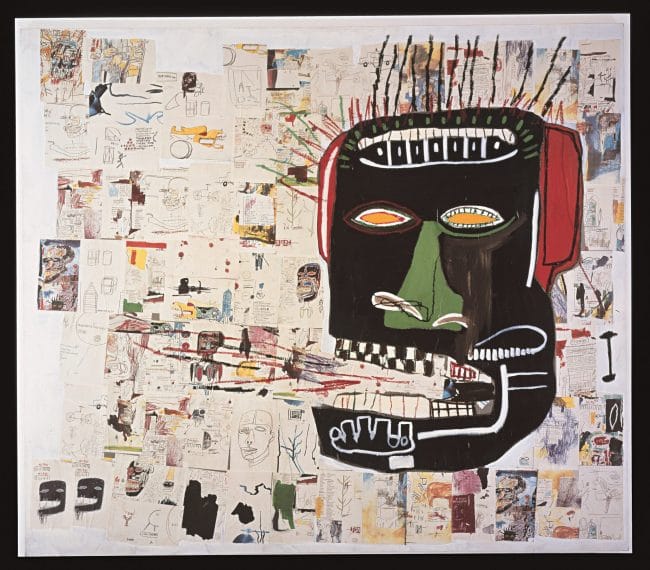
If so far we haven’t mentioned his art much, it is with good reason – there is not a lot here. We do see his graffiti, collages, postcards, sketches, polaroids and even his graffiti covered fridge. We also see books, records and photographs as the Barbican outlines his jazz, art and classical influences.

Where we do see his larger works – vibrant, raw imagery, abounding with fragments of bold capitalised text – they offer insights into both his encyclopaedic interests and his experience as a young black artist with no formal training. New scholarship sheds light on some of his most acclaimed works – sampling from an extraordinary breadth of source material – anatomical drawings to bebop jazz to silent film.
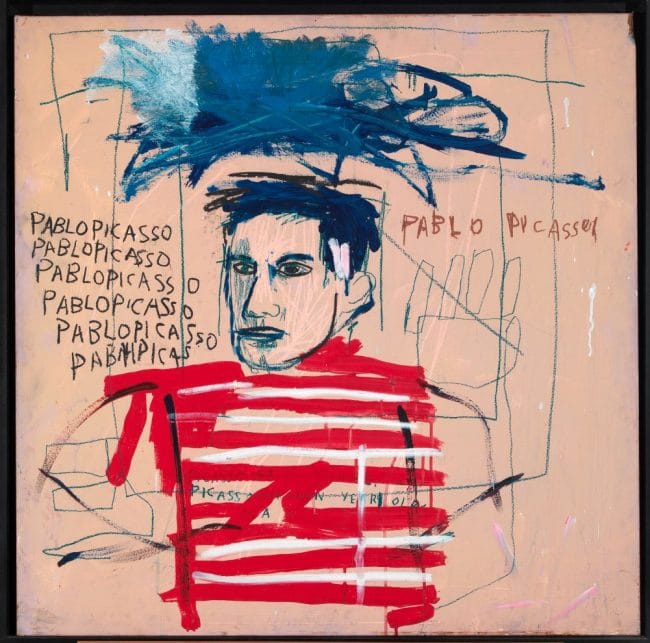
“Untitled” (1981), for example, includes variations of the name Aaron. While Basquiat’s father understood it to be a reference to baseball player Hank Aaron, the Barbican Gallery posits other allusions: a character in Shakespeare’s play “Titus Andronicus,” and the brother of Moses in the Old Testament. Two letters also feature individually, “A” and “O,” and relate to a passage from Revelation that fascinated Basquiat: “I am Alpha and Omega, the beginning and the end.”
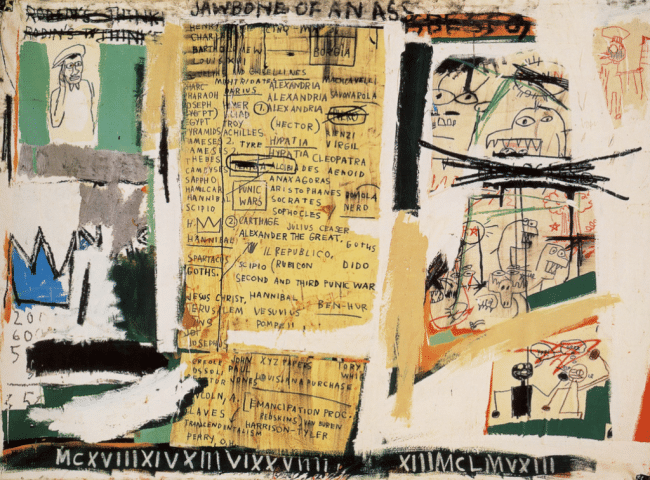
The label for his 1982 painting Jawbone of an Ass, he lists historical figures including Hannibal, Machiavelli, Savonarola, Sappho and Rameses II, is a vision of world history as a ceaseless round of wars. Cartoon monsters with savage teeth express the violence of the painting’s Biblical title. In the bottom right, a black boxer hits a white opponent.
He worked surrounded by imagery: open books, pages from magazines and photographs laying around him as the TV flickered and jazz music played. He worked rapidly absorbing influences from anything and everything. Sometimes the resulting art is hard to like, at others remarkably fresh, powerful and multi-layered.
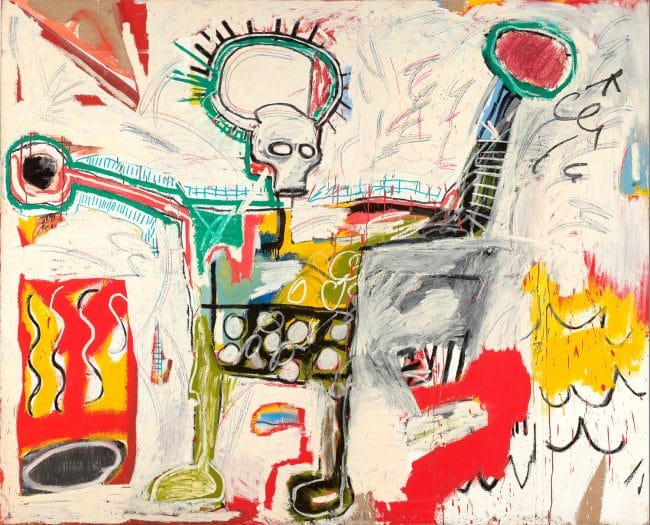
Strangely there is nothing here about his heroin addiction and untimely death at just 27, and we do not know if there were lost chances to save him from self-destruction. We are ultimately left to ponder what sort of art this talented and elemental force would have continued to produce if it were not for his tragic end.
Basquiat: Boom for Real is on at the Barbican Gallery in London until 28 January 2018.
All images © The Estate of Jean-Michel Basquiat, Licensed by Artestar, New York and The Barbican Gallery




